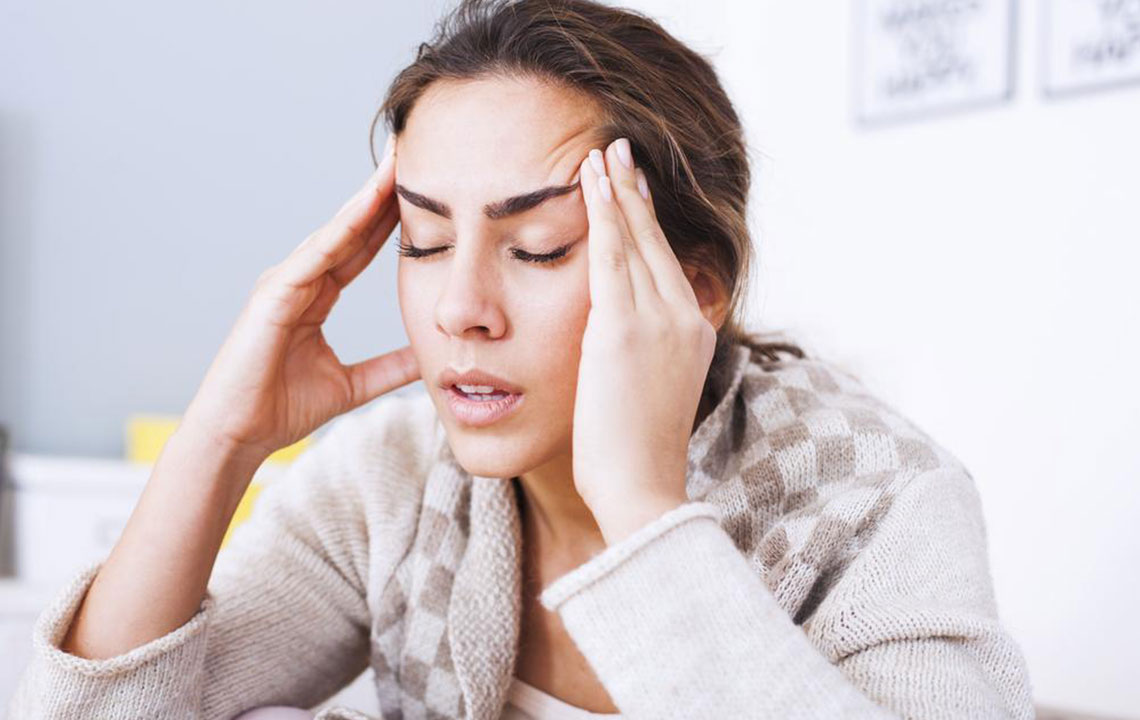Migraine Headaches – Symptoms, Triggers, And Treatment Options
Migraines are painful, recurring headaches that can be preceded or accompanied by sensory signs and other types of systems. As per The National Headache Foundation, around 28 million people in the country are prone to migraine headaches, with women getting it more than men.
The cause of a migraine is not completely understood.

Later, it was found that dopamine and serotonin chemicals (known as neurotransmitters) were starting to play a role in migraine headaches. Dopamine and serotonin are usually found in the brain, but they can cause blood vessels to act in uncharacteristic ways if they exist in uncommon amounts or if the blood vessels are irregularly sensitive to them. These 2 theories together are known as the neurovascular theory of migraine headaches, and it is currently trusted that both theories give insight into the causes of migraine headaches.
Symptoms of migraine
A migraine usually affects only one side of the head and comes with sensory warning signs such as nausea or visual disturbances. These attacks can be divided into 4 primary stages mentioned below.
- Prodrome
This stage of the attack lets one know that a migraine is going to occur. One might experience specific physiological symptoms such as fatigue, mood swings, stiff neck, thirst, and cravings for sweet foods. These symptoms can last anywhere from 1 and 24 hours.
- Aura
The aura stage predominantly involves neurological symptoms such as visual disturbances, seeing dark or colored spots, zigzag lines, or sparkles. In addition, one may also experience tingling, numbness, dizziness, and weakness. Hearing and speech difficulties could also occur during this phase along with memory changes and disorientation.
- Attack
The main stage of migraine, it begins with a throbbing headache that can affect one or both sides. During this period, one may feel nauseous and sensitive to light or touch. Light movements could also cause the headache to get worse.
- Postdrome
The postdrome stage might feel a lot like having a hangover. This stage might last for several hours or in some case even days. A person might also experience the prodrome symptoms in this phase.
Migraine triggers
It is believed that there are different triggers that lead to a migraine in people, some of which are mentioned below.
- Smoking has been recognized as a trigger for multiple people.
- Some foods, like chocolate, cheese, nuts, alcohol, and monosodium glutamate (MSG), may boost migraine headaches. (MSG is a common taste-maker that’s used in a variety of foods)
- Avoiding a meal or changing your sleep schedule may develop a headache.
- Increased emotional or physical stress and tension are also known to cause migraines in some people.
- Contraceptives (birth control medicines) are a common trigger. Women may develop migraines towards the end of a pill cycle as the estrogen part of the pill is terminated. This is termed as estrogen-withdrawal headache.
- Getting addicted to caffeine or going off it suddenly may cause headaches.
- Weather changes like biometric pressure change and altitude change also trigger migraine headaches.
Treating migraine with alternative treatment
The conventional treatment methods for a migraine usually involve medications for pain relief, nausea, preventive medicines, and procedures like transcranial magnetic stimulation (TMS). However, there are some alternative treatment options that could also help lower the frequency or intensity of migraine attacks.
- Yoga – Yoga can regulate the heart rate and blood pressure, enabling one’s body to recover from a stressful situation like migraine. One can try child’s pose, cat stretch, lotus pose, corpse pose, standing forward bend, downward dog pose, and bridge pose to relieve migraine symptoms.
- Biofeedback – Biofeedback is a relaxation technique that employs special equipment to guide you on how to monitor and manage physical responses related to stress like muscle tension or changes in body temperature.
- Massage therapy – A handful of research suggests that massages can improve sleep, alleviate pain, and lower the frequency of migraine attacks. One can opt for different types of massages such as Swedish, sports, deep tissue, reflexology, lymphatic, and shiatsu to mitigate the effect of migraine attacks.
- Acupuncture – Certain clinical trials have concluded that acupuncture might help in relieving the painful headaches. In this alternative solution, the practitioner will insert several thin, disposable needles at defined points in your skin to assuage the pain.
- Cognitive behavioral therapy (CBT) – CBT can benefit people with migraine by teaching them how behaviors and thoughts can help them in perceiving pain.











